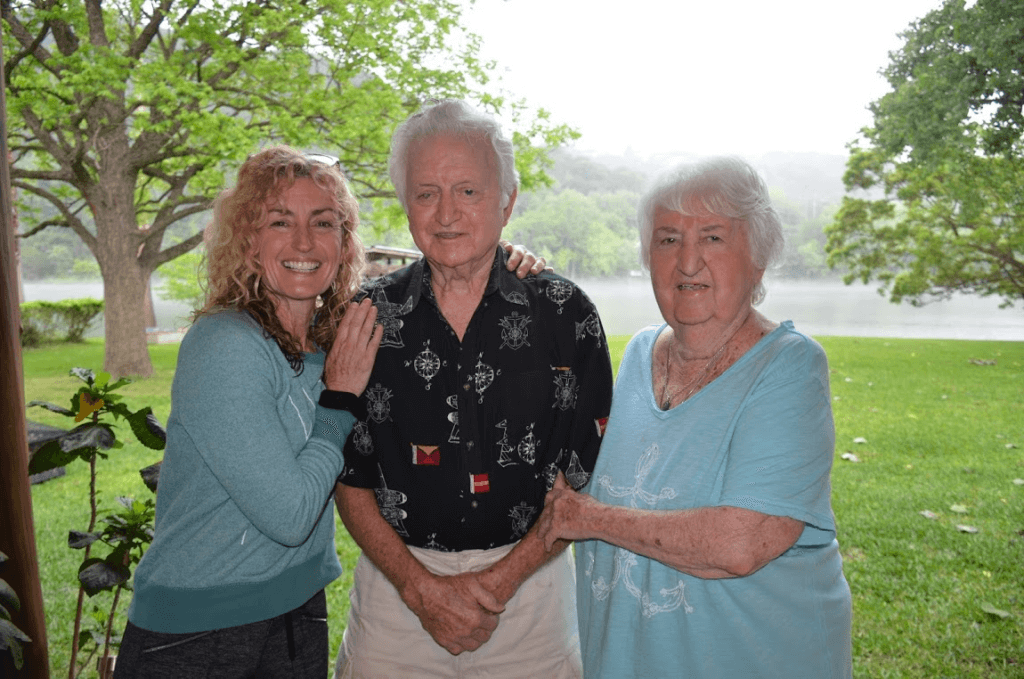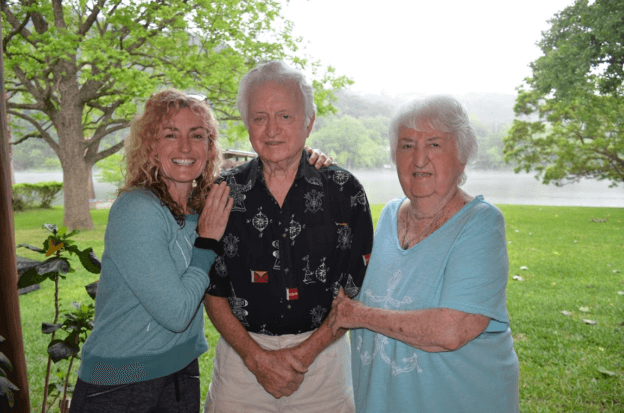
By SARAH DOOLITTLE, Four Points News
Crossing cattle guards to get to work and sending their children to school in Leander where they rode the school bus on country roads an hour each way was the way of life a half century ago in Four Points.
In 1957, Tom and Carole Greene bought their Lake Austin property — they had to drive through the Steiner Ranch to get to their house where there were no other houses, just land between them and the ranch.
Now four generations of the Greene family have called this place home. The Greene’s later bought the property next to them for Tom’s parents to live on after retiring. After his parents’ deaths, their daughter, Cindy, and her husband, Steve, purchased the property and moved into the house, where they then raised their two children.
Tom, 90, and Carole, 88, have been told they are the oldest surviving, continuous residents on Lake Austin. Their property is located between the Steiner Ranch HOA Lake Club and Lake Austin Spa Resort.
“Too far out”
The Greene’s first purchased the house and land with a loan from the builder. Banks wouldn’t give them a mortgage because they thought the property was, “too far out” from Austin, said Tom. Even once they’d moved, Carole said that people would ask where they lived and, “They didn’t even know where (the property was) unless they were fishermen who used to go to Lake Travis.”
Back then, Tom said, Ranch Road 620 was two lanes. And Quinlan Park Road came down to the water, but to get to their house from there meant driving on a dirt road — two dirt ruts really — at least until the Lake Austin Lodges were built for weekend vacationers. The site is now the Lake Austin Spa Resort.
Open range
There were five cattle guards on Quinlan Park Road and the ranch was open range, meaning livestock could roam freely into the road. Selma Hughes Park Road was only paved after the Hughes family donated land for the park.
Work
Tom worked for Lake Austin Lodges from 1962-63, managing the property, and then opened The Corral, a bar and dance hall located on the land that is now the Steiner Ranch HOA Lake Club. He worked as a rep for Lone Star Beer from the late 60s to early 70s while Willie Nelson was getting his start. Eventually Tom bought and ran a small engine sales and repair shop on Burnet Road for 22 years.
“My goal when I graduated from UT was to someday make $900 a month, which would have been $10,000 a year,” said Tom. “If you made $10,000 a year, you could do anything. Jobs didn’t pay anything, but it didn’t cost a lot to live either.”
Carole worked, “at the legislature in the House of Representatives,” and said that, “The traffic (downtown) was bad back then!” After their daughter Cindy was born, Carole continued to work downtown for several years then started working with Tom at the shop.
Family
Born in 1963, Cindy has never known another way of living than lake life, with boat rides to visit the neighbors, weekend horse rides on the Steiner’s 5,000 acre ranch, and a roundtrip daily bus ride to school in Leander, over an hour away each way.
For school, said Cindy, “There was one bus and it picked up K through 12, from here over off of Comanche Trail, Low Water Bridge… We even went down 2222 up towards City Park Road, all the way up 620… And we all hauled to Leander.”
Cindy said all the local kids worked hard to stay in their parent’s good graces in the hopes they’d get picked up by car at Four Points instead of having to ride the bus all the way home.
Four Points was called that because it was the intersection of four roads: “Volente (Bullick Hollow Road), 2222, and 620 E and 620 W.”
The only other kids in the area were the Steiner’s foreman’s kids, who lived on Selma Hughes Park Road. The foreman’s wife kept Cindy (and her brother Tommy after he was born) while their mom worked in town, and it was here that Cindy’s lifelong love of nature, horses and “rambling open land,” as she describes it, took shape.
“I’d ride my horse the Lake Austin Lodges in the 70s,” Cindy said.
The ranch and the people who owned it and worked it were, “a great part of our lives,” recalled Tom. “I spent a lot of time working on the ranch just as a neighbor helping out.”
Livestock
The Greene family was close with the Steiners, who made their money producing rodeos and raising rodeo stock. “Bucking bulls, bucking horses, saddle bronc horses, steer wrestlers and calf roping calves,” said Tom. “He was the world’s largest rodeo producer. He could put on the entire Houston Rodeo with his stock alone. Nowadays it takes three producers to provide enough stock.”
The Greene’s eventually owned five horses of their own, which they would ride around the ranch, working cattle and hunting doves, quail, turkey, goats, deer and Mouflon sheep. The family said the wildlife has not changed much, except that, “We used to have lots of armadillos,” said Cindy.
Local hunters were always claiming to see a black panther at Panther’s Hollow (the name for the area at the end of Selma Hughes Park Rd.).
Wild life
Besides the wildlife, life in Four Points could be wild. “Four Points had no commercial things at all other than bars when we first moved here,” said Tom.
Additionally, there were two clans of “cedar choppers,” the name given to men in the area who cleared and sold cedars from local ranches.
“They all lived up there,” in Four Points, said Tom. “That was a rough place.” They lived in shacks or tents, a fact that used to distress Cindy as she got to know some of the chopper’s kids at school. “It was heartfelt to visit friends who had no plumbing and dirt floors, although a good lesson to understand the roots that we all share.”
The Wards were the Four Points cedar choppers and the Cantwells the Spicewood Springs choppers. “The law wouldn’t even go out there” to Spicewood, recalled Tom.
Monroe
The first business to go in at Four Points that wasn’t a bar was a Texaco — “a full service Texaco,” said Cindy — at the corner of 620 and 2222 where Walgreens now stands. It was owned by the Monroe family, after which Vandegrift’s Monroe Stadium is named.
“Bobby Monroe ran the station and his father, Ed, was employed at Mansfield Dam,” said Cindy. There was also a dance hall at Marshall Ford, located near Comanche Trail and across from Steiner. “They had the best dance floor,” remembered Carole.
Lake life
The family’s main source of entertainment was their friends on the lake, those who lived there as well as the regular visitors from Houston who would come down for the weekends and stay at Lake Austin Lodges.
“A couple of them bought mobile homes because they spent so much time down here,” said Carole. “And except for the lodges there was no place to stay.”
There was a water ski jump in front of Lake Austin Lodges, and many guests, especially when combining water skiing with alcohol, would “go home ragged. Nothing broken,”said Carole, “but a lot of them, they never did do well enough to not fall off the darn thing.”
Lake Austin
The lake itself was crystal clear, emerald green and clean enough to drink, which the Greene’s did from the 50’s through the early 80’s, when their subdivision installed a water well. The native river grass, Milfoil, as well as cattails and other indigenous grasses acted as a filtration system.
“Then the hydrilla came in, which made (the lake) almost impassable,” said Cindy. Carp were introduced from 2011 – 2013 to eat the hydrilla, but they quickly got out of control, also eating the native vegetation. Without the native filtering system and plant roots, the water became murkier. But, said Cindy, “You can still see the bottom.”
The lake was also a source of athletic prowess for Cindy. She started water skiing as a kid for fun and then for the University of Texas water ski team while in college. She and her boyfriend (who later became her husband) started competing on the national circuit in the summers, and the two went on to develop Seaworld San Antonio’s first water ski show.
Ranch becomes community
In the 1980s, Tommy Steiner first started selling off parts of the ranch. As Carole remembers it, “Tommy didn’t make beaucoup money… He was always out of money, so he was always looking for a way to make some more money to pay the bills. ‘Cause that was expensive feeding all those animals.”
“There was a huge land bust here in the 80s,” said Tom. He recalled that the first developers to partner with Tommy went under and then the federal government got involved because taxes were due on the property, he said. Finally in the late 80s, a developer started building homes at the front of Steiner Ranch, and the rest, as they say, is history.
The Greene family is not resentful, though. They figured when they moved to the lake that they had 20 years before the ranch would be sold and got 30 instead.
Beauty, people
Still, those days were special times. “I remember when you dropped over the hill at St. Luke’s and looked out over the lake and the big expanse,” said Cindy. “As far as you could see at night there was always one light. I always wondered, whose light is that out there? Now there’s like millions.”
As she describes it, sitting on her porch with her parents and looking out across the lake on which they all still live, and on which Cindy raised her own two children, “I think physical space translates into mental space.”
Asked what they miss most about that time, though, it’s not the horses or the open space or even the vast darkness, the night sky a sea of stars and one lone house with a light in its window.
“I miss a lot of the people that have all gone,” said Carole simply. “We used to have a lot of fun.”
“When you’re 90 years old, you don’t have a lot of friends still alive,” added Tom. “My friends aren’t alive anymore. And not being able to drive ’cause I can’t see.”
Still, the Greene family has crystal clear memories of a time past. Before them still lies Lake Austin, its glassy surface in constant motion, and the cedar studded hills across the water from their homes a steady backdrop to their lives. The Greenes remind us that, while the world may constantly change, there are some things — like family, friends and fond memories — that remain forever precious.
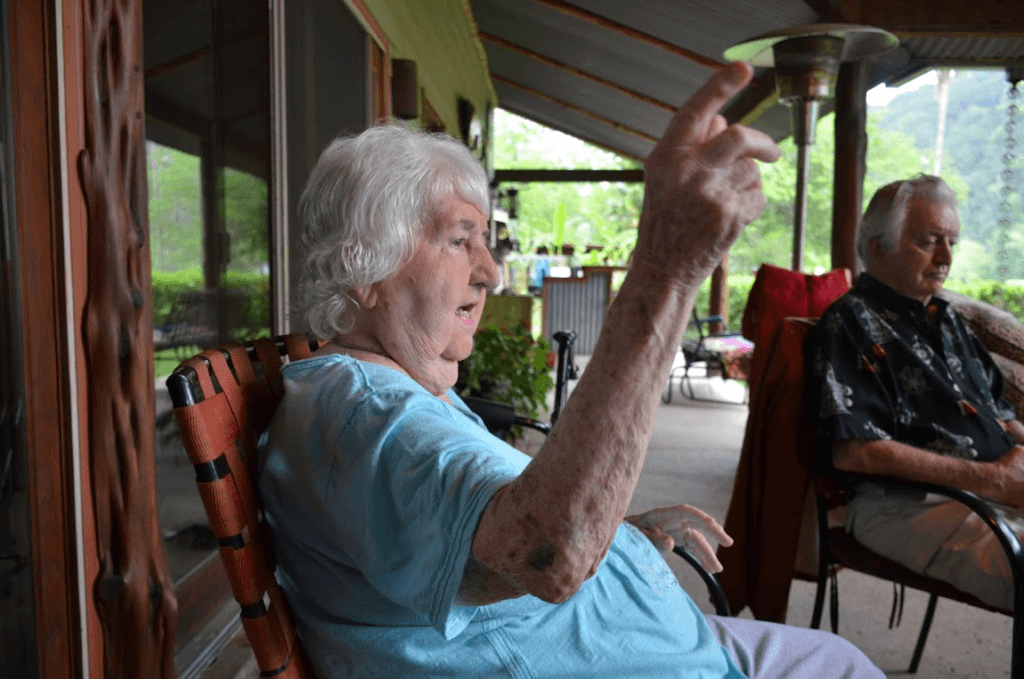
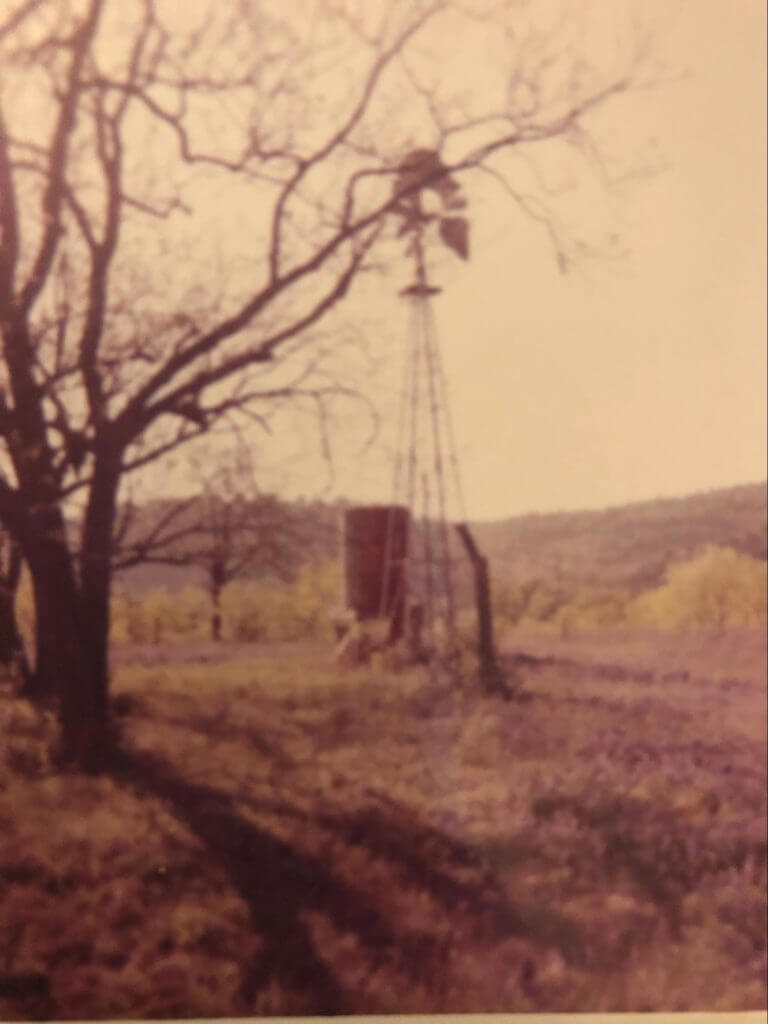

Cindy Present as the Leander Lions football mascot September 1967. 
Cindy Present, 4, was always “practicing” on her slalom ski at their Lake Austin home. 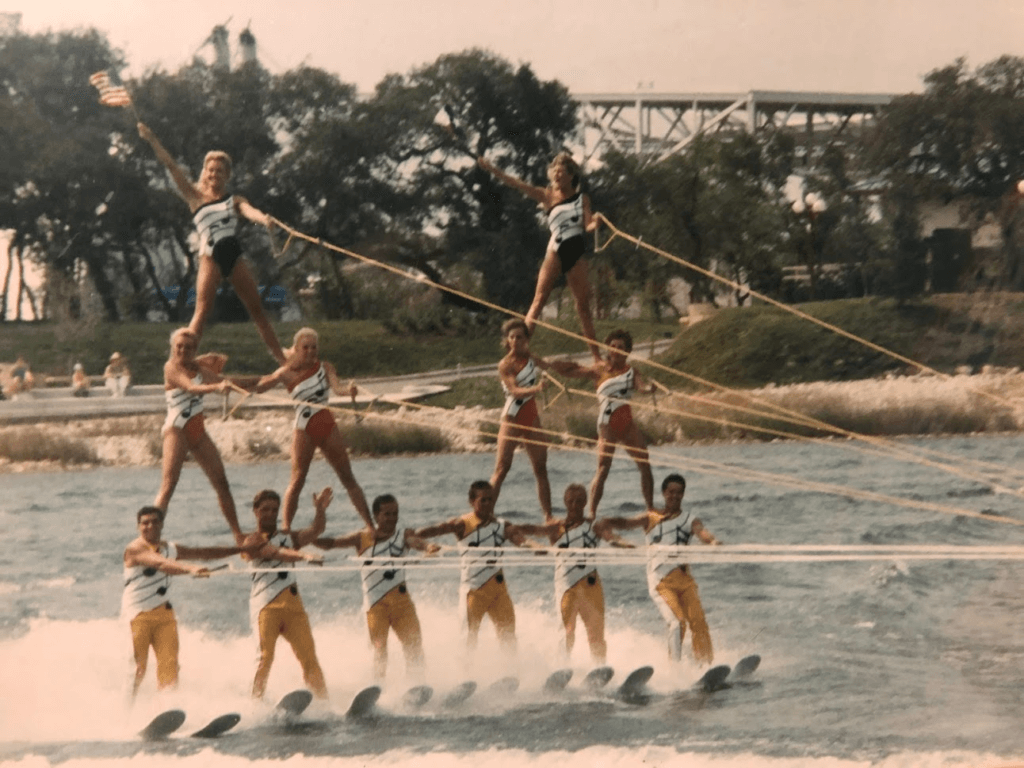
Cindy Present, top left, in 1988 at Sea World San Antonio. Her husband, Steve, was driving the boat that day. 
Cindy Present riding horse next door to her house in her grandparent’s backyard on Lake Austin around 1967. Her grandparents, Herb and Clydie Greene, are seen in the background sitting on the porch. After her grandfather passed away in 2001 at age 98, Cindy and her husband, Steve, bought the house from her dad, Tom Greene. 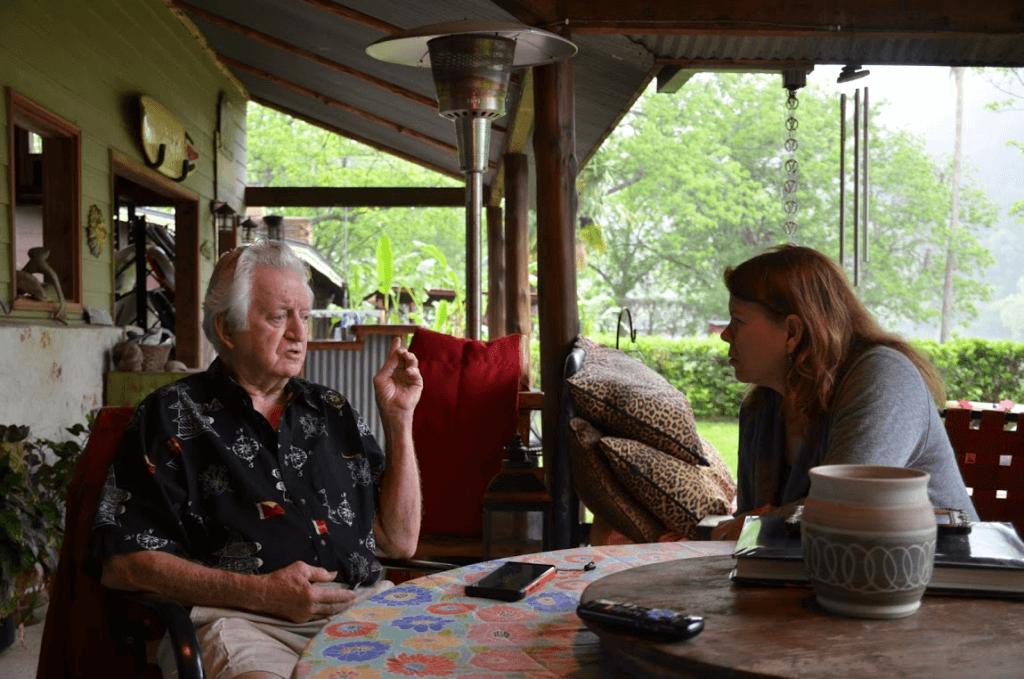
Tom Greene, 90, shares Lake Austin, Four Points and Steiner Ranch history with reporter Sarah Doolittle. 
Tome Greene at Lake Austin Lodges in 1961.
